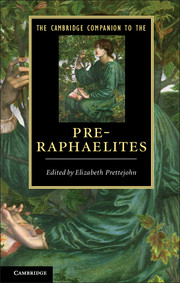Introduction
Published online by Cambridge University Press: 28 September 2012
Summary
‘I cannot compliment them on common sense in choice of a nom de guerre’, wrote John Ruskin in a letter to the editor of The Times published on 13 May 1851, the first time he commented on the work of the Pre-Raphaelite Brotherhood. The reservation came in the context of a stirring defence of the controversial group, and in one way Ruskin was right: the word ‘Pre-Raphaelite’ has caused problems for the group's reputation ever since. Arguably the allusion to the art of a pre-modern age has prevented the artists and writers who adopted the label from being given their due as the first of the modernist avant-gardes. Moreover, the word can be criticized for over-complexity. It refers to the art of an age not precisely before Raphael himself, but rather before his followers and imitators, the ‘Raphaelites’. To be ‘Pre-Raphaelite’, then, is not just to look back to an archaic past; it is also defiantly to reject the idea of following in the footsteps of a master or school. The word thus carries a modernist implication difficult to disentangle from its archaizing one, something that has caused critical problems throughout the century and a half from the formation of the PRB to the present day.
Yet in another sense Ruskin was spectacularly wrong. The word ‘Pre-Raphaelite’ is perhaps the most successful label ever devised for an English artistic movement, still more widely familiar than such labels as ‘Vorticism’, or even ‘the YBAs’; it makes an effective brand name across the spectrum from scholarly journal articles through museum exhibitions to greetings cards. So familiar, indeed, is the label that we may forget to notice how strange it is. It is not easy to pronounce, and there is a flavour of jargon about it; it sounds like a term of scholarly art history rather than the slogan for a group of young rebels. In that respect, however, it was brilliantly calculated to capture the attention of an age that was just beginning to organize its discussions of art and literature historically.
- Type
- Chapter
- Information
- The Cambridge Companion to the Pre-Raphaelites , pp. 1 - 12Publisher: Cambridge University PressPrint publication year: 2012
- 1
- Cited by



